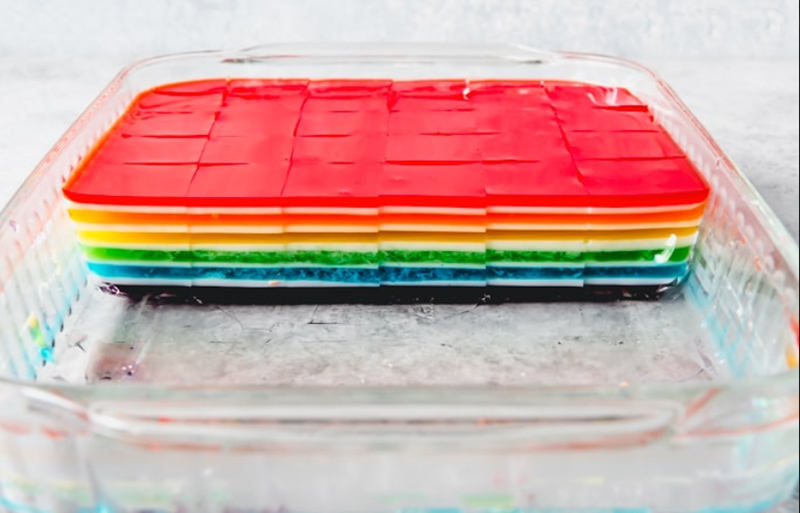Observe how different strata are deposited and how paleontologists know the relative dates of fossils based on the strata in which they are discovered.

Materials
- 4 different colors of instant Jell-O
- Large clear bowl or Tupperware (to hold 4 batches of Jell-O)
- 4 different types of sprinkles, fruit pieces, etc.
- Large bowl to mix Jell-O
- Mixing spoon
- Small bowls to serve the Jell-O to students
- Spoons for eating Jell-O
Engage
Where do paleontologists find fossils? How do they know the age of a fossil? Geologists and paleontologists use the geological time scale to measure the history of the Earth. It is based on the fossils found in rocks of different ages and on radiometric dating of the rocks. Sedimentary rocks (made from mud, sand, gravel or fossil shells) and volcanic lava flows are formed in layers or beds. They build up over time so that that the layers at the bottom of the pile are older than the ones at the top. Geologists call this simple observation the principle of superposition. Ordering of rocks (and the fossils that they contain) in time from oldest to youngest is called relative age dating.
Imagine your laundry basket—the dirty clothes you wore last weekend sit at the bottom, but today’s rest on top of the pile. The concept for sedimentary rocks is the same. Older rocks are on the bottom, younger ones are on top. Researchers also used biostratigraphy, which is the study of how fossils appear, proliferate and disappear throughout the rock record, to establish relative ages. Scientists still use these relative dating methods today as a first approach for dating fossils prior to assigning a numerical, or absolute, age.
Explore
- Mix up one color of Jell-O. Add one type of sprinkles or fruit pieces. Allow the Jell-O to set and cool.
- Repeat the process three more times, pouring each additional color on top of the previous.
- Look at the different layers with students. Explain that when paleontologists dig into the ground, they see layers of rock like the different colors of Jell-O. These layers, called strata, represent different time periods.
Explain
Ask students what they know about ages of the fossils (sprinkles and fruit) inside the strata.
- Are the fossils in the bottom layer older or younger than the fossils in the top layer?
- How do we know?
Is the top layer or the bottom layer older? If students struggle with answering this, lead them with questions.
- Which color of Jell-O did you pour first?
- What day/time did you do that?
- What day/time did you pour the top color?
Extend and Evaluate
- Divide the Jell-O up and allow students to have a tasty snack.